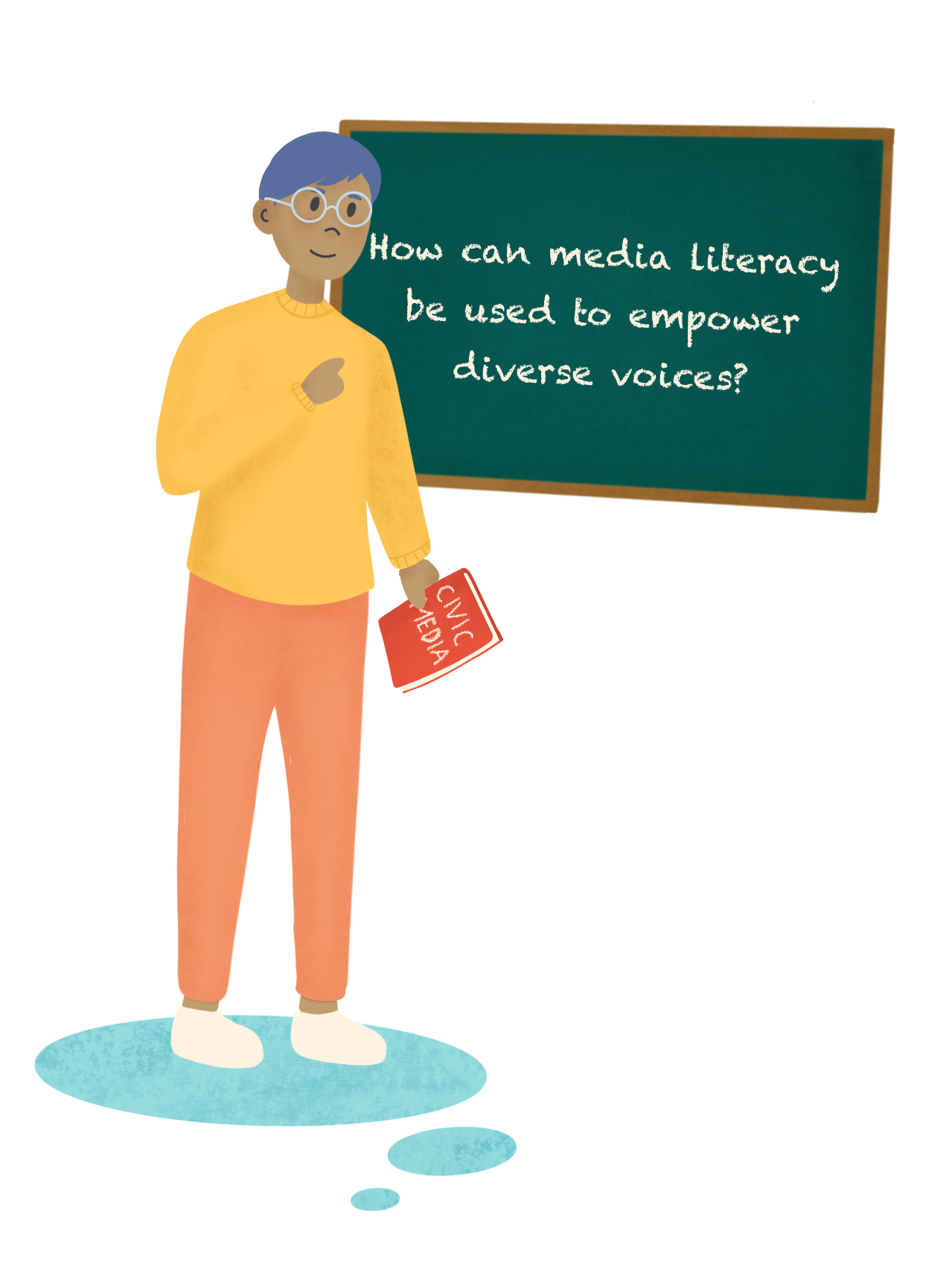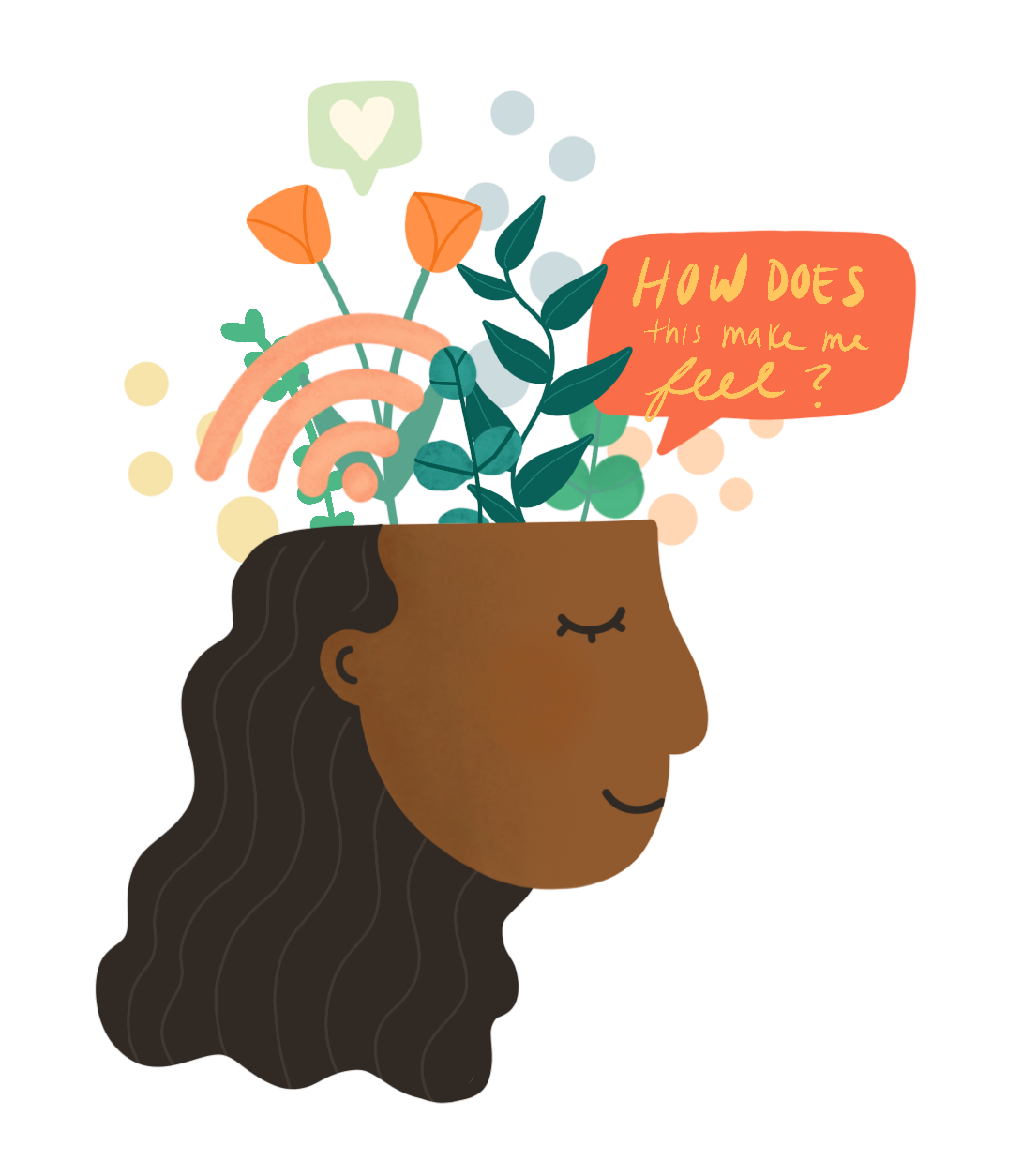Mapping Impactful Media Literacy Practices
Extensive research over the past decades has found media literacy education to positively impact learners’ ability to critique and create media. This research takes place across academic disciplines and within a variety of formal and informal education settings.
This project builds on this wealth of past work to explore how media literacy research and practice identifies and measures impact, and how the language of equity and inclusion exists in media literacy educational practice in the United States.
The values that guide this project are as follows:
Media literacy practices prioritize marginalized and underserved communities. Media literacy practices prioritize just and equitable futures. Media literacy practices are guided by caring ethics. Media literacy practices encourage experimentation, risk-taking, play, and failure. Media literacy practices are nourishing, supportive, inclusive, and respectful.

Throughout this project we interrogate three longstanding assumptions of media literacy practice:
-
Media literacy prioritizes individual agency What skills, habits, attitudes, and behaviors should media literate people demonstrate? And how?
-
Media literacy empowers communities What media literacy practices support trust, equity, care, and participation across communities? And particularly those at the margins of society?
-
Media literacy supports democracy What democractic norms does media literacy support? For whom? And what should media literacy aspire to?
To address these assumptions, this project advances an “ecosystem approach” to research that is comprised of the following three phases:

Scoping Review
Despite the increasing research into media literacy interventions across primary, secondary and higher education in the United States, there has been little consensus on what makes interventions impactful, and how that impact should be measured.
In the first phase of this project, we conduct a scoping review of media literacy interventions in the United States over the last decade to identify and highlight what how impact is defined and approached in media literacy practice.
Based on the findings of the systematic literature review, we identified a core set of indicators for impactful media literacy practices, which we used to interview media literacy stakeholders across the United States.

2
Learning from Media Literacy Stakeholders
To learn more about how impact and equity are understood in media literacy learning environments, our team conducted 27 in-depth interviews with media literacy stakeholders around the United States. These conversations helped us further understand how organizational leaders, community advocates, teachers and administrators think about impact in their space, or work, and how they connect that to issues of equity and inclusion.
We used these insights to design and distribute a national survey to over 750 media literacy practitioners to learn more about how their practices support equity and inclusion, and what they see as the major opportunities and challenges for media literacy education to support more equity-driven learning experiences in classrooms and communities.

A Field Guide for Equitable Media Literacy Practice
The results of our exploration show a clear need to offer resources to support media literacy practitioners develop, design, and implement more equity-focus media literacy practices in their learning environments. To do so, from our research we created a Field Guide for Equitable Media Literacy Practice, which offers resources, activities and approaches to consider how media literacies can be more equity- and inclusion-oriented. The field guide is open and accessible for all, and guides users through five sections that offer a holitistic approach to media literacy practices that can focus on care, inclusion and equity
Contact
- For inquiries with NAMLE, contact: Michelle Ciulla Lipkin: mciullalipkin[at]namle.net
- For inquiries regarding the Mapping Impactful Media Literacy Project contact: Paul Mihailidis: paul_mihailidis[at]emerson.edu